Janet Fox's Blog, page 37
September 21, 2011
Ten Thousand Hours
A short post for a busy week...
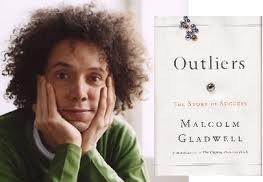 Several years ago I listened to Malcolm Gladwell reading from his wonderful book
Outliers
. He explores what makes someone a true success - an outlier - in their field. Think folks like Bill Gates, Steve Jobs, and the Beatles.
Several years ago I listened to Malcolm Gladwell reading from his wonderful book
Outliers
. He explores what makes someone a true success - an outlier - in their field. Think folks like Bill Gates, Steve Jobs, and the Beatles.
His hypothesis is that it takes 10,000 hours of intense practice in whatever craft you work in - whether computers, music, or in our case, writing - to achieve the kind of mastery that can make you an outlier. There are other factors that weigh in, of course: native talent is nice, as well as a certain intellectual ability. But by and large, it is practice, and lots of it, that make someone more successful than those around him or her.
If you look carefully at the resumes of our most talented and renowned authors you'll notice that by and large they spent a long time getting to the top of the field; there are very few overnight successes.
Do I write every day? I try to, but there are days... The way I look at it, however long I spend at my desk I'm adding to the 10,000 hours I'll need to achieve anything even approaching mastery of the craft of writing for children.
With a rough calculation, 10,000 hours is the equivalent of a year and a quarter of 24/7/365 days. Which means if you work on writing like most normal people, at say, 5 hours per day (and take weekends off but no vacations) it will take you closer to 8 years of steady practice to achieve this kind of mastery.
Eight years of intense practice - constant, daily, rigorous practice with no vacations, sick days, family reunions, kid crises - to achieve anything approaching mastery. I'm sure that even with my steady effort over the course of ten years of writing for children I haven't even approached 10,000 hours.
I think it's time for me to get back to practicing...
 Several years ago I listened to Malcolm Gladwell reading from his wonderful book
Outliers
. He explores what makes someone a true success - an outlier - in their field. Think folks like Bill Gates, Steve Jobs, and the Beatles.
Several years ago I listened to Malcolm Gladwell reading from his wonderful book
Outliers
. He explores what makes someone a true success - an outlier - in their field. Think folks like Bill Gates, Steve Jobs, and the Beatles.His hypothesis is that it takes 10,000 hours of intense practice in whatever craft you work in - whether computers, music, or in our case, writing - to achieve the kind of mastery that can make you an outlier. There are other factors that weigh in, of course: native talent is nice, as well as a certain intellectual ability. But by and large, it is practice, and lots of it, that make someone more successful than those around him or her.
If you look carefully at the resumes of our most talented and renowned authors you'll notice that by and large they spent a long time getting to the top of the field; there are very few overnight successes.
Do I write every day? I try to, but there are days... The way I look at it, however long I spend at my desk I'm adding to the 10,000 hours I'll need to achieve anything even approaching mastery of the craft of writing for children.
With a rough calculation, 10,000 hours is the equivalent of a year and a quarter of 24/7/365 days. Which means if you work on writing like most normal people, at say, 5 hours per day (and take weekends off but no vacations) it will take you closer to 8 years of steady practice to achieve this kind of mastery.
Eight years of intense practice - constant, daily, rigorous practice with no vacations, sick days, family reunions, kid crises - to achieve anything approaching mastery. I'm sure that even with my steady effort over the course of ten years of writing for children I haven't even approached 10,000 hours.
I think it's time for me to get back to practicing...
Published on September 21, 2011 14:22
September 12, 2011
Creating a Smartphone Picture Book App: Lindsey Lane
I was very excited to learn from my friend and Vermont College of Fine Arts classmate Lindsey Lane that she had acquired the rights to her first picture book, Snuggle Mountain , and then created a smartphone app for the book. Finally, someone who could explain this mysterious process! I've interviewed Lindsey, and am delighted to have her here this week.
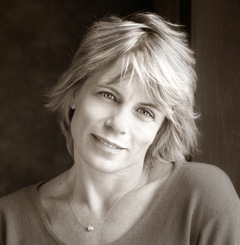 Hi Lindsey! How were you able to acquire the rights? Was that a difficult process?
Hi Lindsey! How were you able to acquire the rights? Was that a difficult process?It was not difficult at all. Cynthia Leitich Smith had recommended Aimee Bissonette of Little Buffalo Law to me as someone who would review contracts for authors who don't have agents. I contacted her in August 2010 and told her that Clarion, the publisher of Snuggle Mountain and imprint of Houghton Mifflin Harcourt, had let SM go out of stock about two years ago and that I would like to get the rights reverted to me. She asked me to send her the Rights Reversion clause in my contract. After reading it, she said it was very standard and all I needed to do was send them a letter requesting that the rights revert to me. Basically what's going on is you have to make the request so that the publisher can decide to put the book back in circulation and, if they don't do that, the rights revert to you. Because the book had been out of stock for two years, it was pretty clear they weren't going to reprint it, so the letter was a formality. Still, Aimee was helpful in drafting the letter, subtly letting HMH know that she was representing me and then being available to me if I needed any extra help. Aimee said to give the HMH folks about three months to go through their process and then contact them again. Sure enough, three months later, I wrote them a brief: 'How is the progress on the Snuggle Mountain rights reversion?' email and, a week after that, a disk of the book arrived in the mail with a letter telling me that the rights belonged to illustrator Melissa Iwai and me. Ta-Dah!
I was so excited to learn that you have created a smartphone app of the book. Can you tell us (a) how you went about creating the app, (b) how you made it available, (c) how you think it's working?
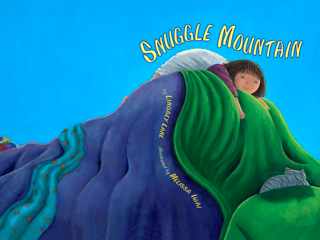 After Melissa and I got the rights back in December 2010, I emailed her to see what she thought about making Snuggle Mountain into a digital book. She was all for it. She had already been approached by someone who was doing ebooks and apps so we just broadened our search. Fortunately, a group of authors and illustrators had just stared a blog called e is for book. The premise of the blog is that a book is a book regardless of the format and each contributor's blog post focused on the creation of digital books for kids. Through that site and links to other sites, Melissa and I learned the names of ebook and app developers. We took turns querying and interviewing them. The one that popped out for us was PicPocket Books. They had developed Elizabeth Dulemba's Lula's Brew and Elizabeth was very complimentary of their work. We sent Lynette Mattke of PicPocket Books a copy of Snuggle Mountain and she said she would very much like to make it into an app. We had a conference call with her and afterwards, Melissa and I agreed that what we liked about Mattke's approach was that she really likes to remain true to the integrity of the book. She didn't want to turn books into games. We signed with her in March. I got busy adding bits of dialogue for Emma. Melissa handled all the reformatting of the artwork for the iPhone and the iPad as well as creating the artwork for specific animations like wagging tails and sniffing noses. In April, Lynette and I skyped and she showed me the app on the desktop of her computer. (That was co cool.) We tweaked a few things (the sheep dog sounded like a Chihuahua) and it was available on iTunes in Mid-May. Because PicPocket Books is an approved Apple app developer, Snuggle Mountain is only available through iTunes and, right now, only folks with iPads and iPhones can purchase the Snuggle Mountain app. But that could change next week. Seriously. The digital world changes that fast.
After Melissa and I got the rights back in December 2010, I emailed her to see what she thought about making Snuggle Mountain into a digital book. She was all for it. She had already been approached by someone who was doing ebooks and apps so we just broadened our search. Fortunately, a group of authors and illustrators had just stared a blog called e is for book. The premise of the blog is that a book is a book regardless of the format and each contributor's blog post focused on the creation of digital books for kids. Through that site and links to other sites, Melissa and I learned the names of ebook and app developers. We took turns querying and interviewing them. The one that popped out for us was PicPocket Books. They had developed Elizabeth Dulemba's Lula's Brew and Elizabeth was very complimentary of their work. We sent Lynette Mattke of PicPocket Books a copy of Snuggle Mountain and she said she would very much like to make it into an app. We had a conference call with her and afterwards, Melissa and I agreed that what we liked about Mattke's approach was that she really likes to remain true to the integrity of the book. She didn't want to turn books into games. We signed with her in March. I got busy adding bits of dialogue for Emma. Melissa handled all the reformatting of the artwork for the iPhone and the iPad as well as creating the artwork for specific animations like wagging tails and sniffing noses. In April, Lynette and I skyped and she showed me the app on the desktop of her computer. (That was co cool.) We tweaked a few things (the sheep dog sounded like a Chihuahua) and it was available on iTunes in Mid-May. Because PicPocket Books is an approved Apple app developer, Snuggle Mountain is only available through iTunes and, right now, only folks with iPads and iPhones can purchase the Snuggle Mountain app. But that could change next week. Seriously. The digital world changes that fast.Did you find the process easy or was the learning curve steep?
PicPocket had about 30 apps under its belt when we came along so that made our process very easy. What was a bit disorienting is the speed of this process. The publishing industry moves at a snail's pace compared to the app and ebook world. Normally you have time to prepare for publicity (you know make a trailer, do pre-release buzz, make a postcard), but suddenly the app was out and I still feel like I am catching up. But on the other side of the proverbial coin, the app is not a book taking up warehouse space so as long as I'm out promoting it, parents can download the app. Really, it's pretty sweet to be in an airport, near a wiggly child and ask them if they like books. If they do, I ask the parents if they mind if I read them a book. Next thing you know, I've got this little one sliding her finger across the iPhone screen, turning digital pages. Kinda fun.
Would you recommend to authors who have not yet published but who may have a picture book ready that they try creating an app?
Hmm, interesting question. I know that there is a digital fever for books right now. App and ebook developers are cropping up like toadstools after the rain. Melissa and I had an advantage in that Melissa's gorgeous artwork was already created so it made our project very viable and easy to convert into an app. Certainly, any author or illustrators with out of print picture book should try this route. It's thrilling to me that Snuggle Mountain can be out there in the hands of the little readers and their parents. For pre-published writers who have written picture book that they would like to turn into an app, it will be a much different journey without already created artwork. But really, anything is possible. I mean, it's sort like the wild west (at the Toadstool corral) right now with traditional publishing scrambling to catch up to epublishing and app developers opening up to the possibility of picture books.
Anything else about this mysterious world that you'd like to share?
A couple of things.
Melissa and I asked Lynette about making the Snuggle Mountain app available to other smart phones like the Droid. Right now it's not possible. There is a digital divide between Apple and other smart phones and tablets.
When I started this process, I was a neophyte in the digital world. Really. I had to learn the difference between eBoooks and apps and why a picture book needs to be an app not an eBook. If you have ever seen a picture book an eBook, you would get it immediately. Basically an eReader only shows you one page at a time, so the artwork on a full-page spread gets cut in half. Not very satisfying when illustrators create artwork for a two page spread. With the app format, you can see the entire two page spread on the screen so nothing gets cut in half. It's quite lovely, really. That said, I just read a post by Elizabeth Dulemba that she has formatted her Lula's Brew to fit on a Nook. So once again, the digital world is shifting.
Contracts are changing to reflect the digital presence in publishing. Check out the rights reversion clause in your current and future contracts. Pay attention to where your rights will go if the print version of your book goes out of print. Pay attention to your rights period. Be careful they don't drift off into the ethers of the eWorld.
Finally, in the digital world, there is a new kind of typo. When you first see your book as an app, it is really important to check all the bells and whistles it offers. Remember an app is short for application, which is a kind of software, which means that there can be formatting glitches. Fortunately, in the world of apps, you can send out an update and glitches gets fixed pretty easily but still, these glitches are like typos (and I hate typos) so check ALL the ways your app works before it goes out.
What are you working on now?
On October 8, Austin SCBWI is presenting a symposium called StoryTelling in the Digital Age. I am thrilled to join a stellar faculty and present the picture book app journey to participants. Oh, and I'm excited about taking a writing class with Margo Rabb this fall.
I'm so happy you came by - thank you!
Published on September 12, 2011 14:35
September 5, 2011
Random Acts of Publicity Week: A Selection of Favorites
Author Darcy Pattison had a great idea a few years ago: a week authors could devote to promoting other authors. This is the week, and I'm going to start right off with Darcy.
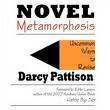 Last fall I had the pleasure of attending one of Darcy's weekend-long novel revision retreats. Let me just say that if you ever have the opportunity to attend one, jump. She walks participants through the techniques outlined in her clever book
Novel Metamorphosis
, and I had enough new ideas and strategies to see me through any number of novel revisions. Not to mention seeing in bold where my work was flawed and what I could do to shore up sags.
Last fall I had the pleasure of attending one of Darcy's weekend-long novel revision retreats. Let me just say that if you ever have the opportunity to attend one, jump. She walks participants through the techniques outlined in her clever book
Novel Metamorphosis
, and I had enough new ideas and strategies to see me through any number of novel revisions. Not to mention seeing in bold where my work was flawed and what I could do to shore up sags.
I've said it before, but I'll say again: I could not revise a thing without the help of Donald Maass and his two outstanding books: Writing the Breakout Novel and Writing the Breakout Novel Workbook . I learn something new each time I re-read - which I do each time I revise.
I have struggled with plot, but Martha Alderson is a clear light in the dark forest. Her Blockbuster Plots video is a staple of mine, and I never plot now without checking my draft against her brilliant template.
Now, I don't review fiction; but I'd like to introduce readers to two authors whose work I admire greatly. Both are Canadian, and their books don't get lots of publicity in the States, but they deserve an audience.
 The first is a man who writes across genres - adult, young adult, middle grade - and he is richly talented. His name is
Alan Cumyn
.
The first is a man who writes across genres - adult, young adult, middle grade - and he is richly talented. His name is
Alan Cumyn
.
Alan has written three charming and hilarious middle grade novels that commence with the award-winning The Secret Life of Owen Skye . These novels are the best kind of "boy books" - totally engaging, respectful of their audience, beautifully written. His newest fiction is right at the top of my TBR pile, a young adult novel, Tilt .
The second novelist I'd like to honor is Sarah Ellis. (Sarah writes reviews for The Horn Book, but don't let that left-brained activity fool you. She also writes fiction with heart.) Sarah's award-winning middle grade novel Odd Man Out had me laughing out loud. She, like Alan, is able to voice the mind of a young boy with exceptional clarity.
You may not find Alan's and Sarah's books on your local bookstore shelves but they are worth ordering - for yourself, or a young reader you know, who will truly thank you.
 Last fall I had the pleasure of attending one of Darcy's weekend-long novel revision retreats. Let me just say that if you ever have the opportunity to attend one, jump. She walks participants through the techniques outlined in her clever book
Novel Metamorphosis
, and I had enough new ideas and strategies to see me through any number of novel revisions. Not to mention seeing in bold where my work was flawed and what I could do to shore up sags.
Last fall I had the pleasure of attending one of Darcy's weekend-long novel revision retreats. Let me just say that if you ever have the opportunity to attend one, jump. She walks participants through the techniques outlined in her clever book
Novel Metamorphosis
, and I had enough new ideas and strategies to see me through any number of novel revisions. Not to mention seeing in bold where my work was flawed and what I could do to shore up sags.I've said it before, but I'll say again: I could not revise a thing without the help of Donald Maass and his two outstanding books: Writing the Breakout Novel and Writing the Breakout Novel Workbook . I learn something new each time I re-read - which I do each time I revise.
I have struggled with plot, but Martha Alderson is a clear light in the dark forest. Her Blockbuster Plots video is a staple of mine, and I never plot now without checking my draft against her brilliant template.
Now, I don't review fiction; but I'd like to introduce readers to two authors whose work I admire greatly. Both are Canadian, and their books don't get lots of publicity in the States, but they deserve an audience.
 The first is a man who writes across genres - adult, young adult, middle grade - and he is richly talented. His name is
Alan Cumyn
.
The first is a man who writes across genres - adult, young adult, middle grade - and he is richly talented. His name is
Alan Cumyn
.Alan has written three charming and hilarious middle grade novels that commence with the award-winning The Secret Life of Owen Skye . These novels are the best kind of "boy books" - totally engaging, respectful of their audience, beautifully written. His newest fiction is right at the top of my TBR pile, a young adult novel, Tilt .
The second novelist I'd like to honor is Sarah Ellis. (Sarah writes reviews for The Horn Book, but don't let that left-brained activity fool you. She also writes fiction with heart.) Sarah's award-winning middle grade novel Odd Man Out had me laughing out loud. She, like Alan, is able to voice the mind of a young boy with exceptional clarity.
You may not find Alan's and Sarah's books on your local bookstore shelves but they are worth ordering - for yourself, or a young reader you know, who will truly thank you.
Published on September 05, 2011 17:06
August 28, 2011
"Advanced Plotting": All You Need to Know and More
Not long ago fellow kidlit author Chris Eboch invited a bunch of us to submit articles for an ebook she wanted to produce:
Advanced Plotting
. The book is now available for download, and, what's more, she's given us permission to offer it *for a limited time* for free. (Not to worry...if you read this article too late for the promo, you can buy the ebook for an easy-on-the-pocketbook price of $0.99. See below for the promo.)
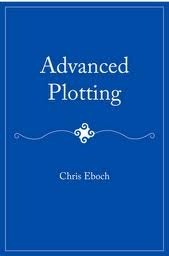 Chris is author of the blog Write Like a Pro! and often has valuable tips and topics, so I would urge you to trot on over and have a look.
Chris is author of the blog Write Like a Pro! and often has valuable tips and topics, so I would urge you to trot on over and have a look.
I've struggled with plot quite a bit - it doesn't come easily to me - and as a result have found myself reading mountains of books that have helped me through the thicket. In my contribution to Advanced Plotting I outlined what I consider to be the crucial plot turning points. Here's some of what I wrote:
Traditional plots contain turning points, or transition points – points in the plot at which your protagonist's problem-solving action turns in a new direction. Turning points are important because they serve to increase tension and thus reader interest.
Put it this way: turning points are the significant moments of change in your story.
Beginning with Aristotle, who defined three-act structure, a number of writers and critics have identified these points and where they usually occur in the plot and given them names and relative value. There are seven especially important turning points. In order of appearance they are: the inciting incident; plot point one; pinch one; midpoint; crisis; plot point two; climax.
Before I discuss where these turning points occur in the plot, I'd like to explain what I mean by how the protagonist's action "turns." Your protagonist has an identifiable goal and must surmount a number of increasingly difficult obstacles. Each time she thinks she's closing in on her goal, some new obstacle arises and forces her to "turn" to a new method of solving her problem. Until the climax of the story, she is unable to resolve the problem, and with each turn the stakes are raised.
In the article that follows this intro I outline each turning point, noting where it should fall (roughly) in the plot, and giving an example to demonstrate.
Here's how I close:
When I finish my first drafts I use a plot chart to see whether I've placed these seven turning points roughly where they should be according to page count. (Let me emphasize the word "roughly". A plot template should be used to help guide you, not constrain you.) I divide my manuscript into the three acts and then note where the turning points should be by page count. I also note whether their relative values are correct – if plot point two has higher tension and drama than my climax, I'd better revise.
The thing to keep in mind is that all major points in your plot should be characterized by change. Change in your protagonist is what generates tension and thus holds reader interest. And engaging reader interest is your first goal, always.
There are tons of great articles in Chris's book, and until September 3, you can download a copy for free! Go to this url and enter the promotional code PS76M. I hope Advanced Plotting advances your work in every respect.

 Chris is author of the blog Write Like a Pro! and often has valuable tips and topics, so I would urge you to trot on over and have a look.
Chris is author of the blog Write Like a Pro! and often has valuable tips and topics, so I would urge you to trot on over and have a look.I've struggled with plot quite a bit - it doesn't come easily to me - and as a result have found myself reading mountains of books that have helped me through the thicket. In my contribution to Advanced Plotting I outlined what I consider to be the crucial plot turning points. Here's some of what I wrote:
Traditional plots contain turning points, or transition points – points in the plot at which your protagonist's problem-solving action turns in a new direction. Turning points are important because they serve to increase tension and thus reader interest.
Put it this way: turning points are the significant moments of change in your story.
Beginning with Aristotle, who defined three-act structure, a number of writers and critics have identified these points and where they usually occur in the plot and given them names and relative value. There are seven especially important turning points. In order of appearance they are: the inciting incident; plot point one; pinch one; midpoint; crisis; plot point two; climax.
Before I discuss where these turning points occur in the plot, I'd like to explain what I mean by how the protagonist's action "turns." Your protagonist has an identifiable goal and must surmount a number of increasingly difficult obstacles. Each time she thinks she's closing in on her goal, some new obstacle arises and forces her to "turn" to a new method of solving her problem. Until the climax of the story, she is unable to resolve the problem, and with each turn the stakes are raised.
In the article that follows this intro I outline each turning point, noting where it should fall (roughly) in the plot, and giving an example to demonstrate.
Here's how I close:
When I finish my first drafts I use a plot chart to see whether I've placed these seven turning points roughly where they should be according to page count. (Let me emphasize the word "roughly". A plot template should be used to help guide you, not constrain you.) I divide my manuscript into the three acts and then note where the turning points should be by page count. I also note whether their relative values are correct – if plot point two has higher tension and drama than my climax, I'd better revise.
The thing to keep in mind is that all major points in your plot should be characterized by change. Change in your protagonist is what generates tension and thus holds reader interest. And engaging reader interest is your first goal, always.
There are tons of great articles in Chris's book, and until September 3, you can download a copy for free! Go to this url and enter the promotional code PS76M. I hope Advanced Plotting advances your work in every respect.
Published on August 28, 2011 19:50
August 23, 2011
Shifting Gears: The Pause that Refreshes
For about eight months solid, I've been working on my next YA novel Moll (out in early 2013.) That's a bunch of drafts, spelled only by various working trips. I finally got it to a place where I thought my editor could look at it, and when we spoke by phone she had exactly the same issues as had been mentioned by my brilliant new critique group.
I feel good, because they are issues I can easily tackle, especially if I give myself a little distance.
So I'm giving the novel a rest. Taking a break. But as anyone who knows me can tell you, that doesn't mean I'm not writing. I'm kind of obsessive that way.
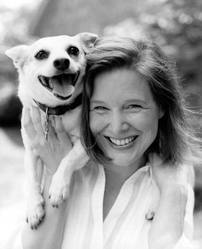
Ann Patchett and friend
I write every day. Maybe not for long, maybe not much that's any good, but I do write every day. If I get two pages done that I'm reasonably happy with, I feel good. Ten pages and I feel like a winner. And for me, I like to shift gears completely, and work on something totally new.
Not long ago I saw a quote from Ann Patchett, who says she only works on one project at a time, not heeding the siren song ("Write me! Write me! I'm going to be so much easier to write than that piece of you-know-what you're working on now!") of a new idea until she's finished her current project...and then thinks the new project through for months, even years. I adore Ann Patchett's work. But that's just not my style, which I think is just fine.
So for the next few weeks, until I get written comments, I'm working on a middle grade fantasy that couldn't be more different than my historical YAs. Think angels and imps, talking animals and monsters. I'm having so much fun, and I know all my work will be better for this shift in my POV.
Maybe you're like Ann Patchett and must be immersed in your current story until it's done. But maybe you're a shift-gears kind of person, too. I think it's fine to discover your best way to work - which also may evolve over time or change with each project.
Give yourself permission to play, to break the mold, to try new approaches.
I feel good, because they are issues I can easily tackle, especially if I give myself a little distance.
So I'm giving the novel a rest. Taking a break. But as anyone who knows me can tell you, that doesn't mean I'm not writing. I'm kind of obsessive that way.

Ann Patchett and friend
I write every day. Maybe not for long, maybe not much that's any good, but I do write every day. If I get two pages done that I'm reasonably happy with, I feel good. Ten pages and I feel like a winner. And for me, I like to shift gears completely, and work on something totally new.
Not long ago I saw a quote from Ann Patchett, who says she only works on one project at a time, not heeding the siren song ("Write me! Write me! I'm going to be so much easier to write than that piece of you-know-what you're working on now!") of a new idea until she's finished her current project...and then thinks the new project through for months, even years. I adore Ann Patchett's work. But that's just not my style, which I think is just fine.
So for the next few weeks, until I get written comments, I'm working on a middle grade fantasy that couldn't be more different than my historical YAs. Think angels and imps, talking animals and monsters. I'm having so much fun, and I know all my work will be better for this shift in my POV.
Maybe you're like Ann Patchett and must be immersed in your current story until it's done. But maybe you're a shift-gears kind of person, too. I think it's fine to discover your best way to work - which also may evolve over time or change with each project.
Give yourself permission to play, to break the mold, to try new approaches.
Published on August 23, 2011 15:11
August 15, 2011
What Makes a Successful Book Event?
In the past six months I've met lots of wonderful indie bookstore owners (yay, indies!) who have been generous with their time and support of me and my books. A number of these events were well attended by tweens and teens and I had such fun meeting them.
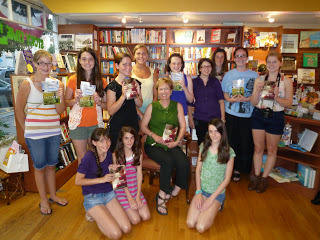
Daughters of the mother/daughter book club event at Booktowne in Manasquan, NJ
But at some of these events the bookstore owner couldn't get teens to commit their time to come in for a discussion, reading…even free food. In this post I'd like to offer a few ideas that bookstore owners and other writers have shared that have led to successful events, and then invite your comments and suggestions.
Teen readers – please add your thoughts. We'd all love to hear from you. What would you like to see at your local indie bookstore?
Here are some things I've heard or tried lately:
1. 1. Try a value-added event. For example: add live music. I thought it might be fun to have a "Band (Banned) Book Week" night, with discussions about "banned" books, "band" books (books featuring music), and with a local live band for entertainment.2. 2. Create a Q&A flyer for mother/daughter, or father/son, book clubs to get discussions started.3. 3. Pair your book event with another shop in town. For example, for my historical novels I might contact a local vintage shop and see if they would like to feature period clothing and other items, and maybe offer cross-promotional discounts.4. 4. Find a local charity and offer to support them with a $1.00 donation for each book sold. Pair your event with a fundraising event for the charity.
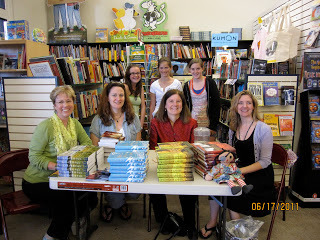
Multi-author event at Yellow Book Road, San Diego, CA
5. 5. Talk with the local children's public librarian. Arrange to read at the library just before your event.6. 6. Multi-author events are terrific, especially if the books cross genres and age groups. Often readers will "discover" your book when they came to visit one of the other authors.7. 7. A "reader's theatre" event combines the multi-author approach with entertainment. (In a reader's theatre, books are condensed into short play form and read/acted by the authors.)
And authors – support both your local indie and your fellow authors by attending their book signings and events. I've had great support at mine – thank you, my friends.
Please share your ideas – what's worked for you? Teens - what would you like to see?
Published on August 15, 2011 16:22
August 9, 2011
Elaine Alphin
In a terrible coincidence, as I was writing the preceding post about my new critique group, one of my partners, Elaine Alphin, suffered a massive stroke that has her in the ICU attended by her loving husband, Art.
Elaine is a prolific author of more than thirty books for children and young adults, including the award-winning novels The Ghost Cadet, An Unspeakable Crime, The Perfect Shot, Ghost Soldier, and Counterfeit Son .
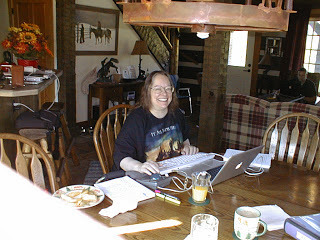
Elaine Marie Alphin, doing what she loves best, July 27, 2011
More importantly, Elaine is generous, warm, loving, intelligent, a superb critiquer, has a childlike heart, and she's my new friend. We are all thinking of her and praying for her and for Art now.
Elaine is a prolific author of more than thirty books for children and young adults, including the award-winning novels The Ghost Cadet, An Unspeakable Crime, The Perfect Shot, Ghost Soldier, and Counterfeit Son .

Elaine Marie Alphin, doing what she loves best, July 27, 2011
More importantly, Elaine is generous, warm, loving, intelligent, a superb critiquer, has a childlike heart, and she's my new friend. We are all thinking of her and praying for her and for Art now.
Published on August 09, 2011 19:51
August 8, 2011
All For One, And One For All: The Beauty of the Critique Group
I have been blessed with marvelous critique groups. I've had two, one in Texas, and now a new group in my new home in Montana, and both have brought depth to my craft.
Before I introduce you to my partners, I have gathered 10 thoughts about critiquing in general, and should you be thinking about joining or starting a critique group, I hope these comments help.
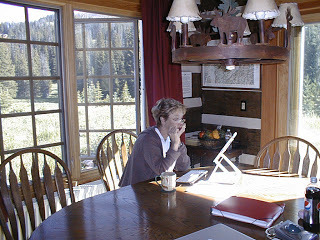
Me at our recent critique retreat...more about that below.
1. How do you find a critique group? Start with your local SCBWI or other local writer's organization. Go to meetings and conferences. Chat with people. When you find a like-minded person or two, ask if they'd like to partner. (That's how I've found my first group - I met the members at an SCBWI conference and admired their writing.)
2. Don't be afraid to try out the group and decide it's not meshing and won't work. You are all making a great commitment of time and energy, and everyone should be invested equally or it won't fly.
3. Create a regular meeting time/place. Wherever best suits the entire group works. I like to meet at least twice a month for a couple of hours. Less than that and it's hard to make progress with everyone's work.
4. A critique group is an intimate circle, and the relationship is like a marriage. You must be willing to commit your time and energy for the benefit of the group and not just for yourself. Sometimes (as you do with your spouse) you just have to bite your tongue; but most of the time you should be honest, open, and sincere.
5. The best critique groups function symbiotically. No one dominates; no one is allowed to hide. Comments are given free reign to build; often this free-flow conversation generates new ideas and insights for the writer - and the critiquers.
6. Being honest (see #1) does not give you permission to diss another's writing. Ever. If you truly don't like something a partner has written, find a reason for your negative reaction in the context of why it doesn't work - is it the voice, the character, the plot? Or do you just not like the genre (in which case try to divorce yourself from that response and analyze the writing alone.)
7. If you are receiving the critique, other than asking questions, it's best to remain silent. Don't try to defend your work. Trust me, your work is never that perfect.
8. The more you can assess your partners' work in the context of craft, the more you will learn. See the critique you provide as a part of your learning curve. Searching for craft issues or strengths is the best way to see whether you are applying them correctly in your own work.
9. Spend a little time becoming friends. It's okay to stray into conversation about family, life, etc. Just don't let it eat too much into your precious critique time.
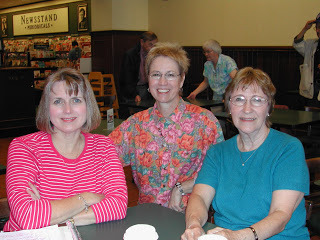
Kathy, me, and Shirley
10. Never feel jealous of another's success - there is always more bookshelf space, and your book may be next up. Take pride in the fact that you've helped your partner accomplish her goal.
My two groups? In Texas I was lucky enough to have a group that lasted, if I'm doing the math right, over 8 years. I met Shirley Hoskins and Kathy Whitehead at an SCBWI workshop, and when we shared our work, I was awed by their talent. I sucked in my breath and asked each of them in turn - and they said yes. We met weekly for most of those 8 years, and I'm proud to say that all three of us began as unpublished writers, and now we are all published. I feel that the combination of their wise insights and those weekly deadlines (ten pages each week!) grew me as a writer.
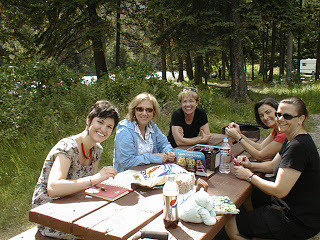
Bailey Jorgensen, Sandra Brug, me, Kiri Jorgensen, Maurene Hinds (Elaine Alphin behind the camera) on our way to our retreat.
When we moved last summer I was at a loss. I almost couldn't function as a writer without my partners. I floundered until last spring, when I was invited to join a group here in Montana. And I couldn't be more thrilled. They are insightful, talented, and motivated. We just came back from a four-day writing retreat (picture: remote mountain cabin with all the amenities; six women spread out in the open spaces; the clicking of keys; coffee brewing; relaxed and delicious meal sharing; laughter; walks; more writing; a couple of hilarious movies. Heaven. Highly recommend.)
Now here's the best part about a critique group that works. When I talked with my editor today about my WIP, my critique partners had already nailed the big issues. I had a handle on what I needed to do to improve my novel, and I had it from their comments.
So, yes, a great critique group is a beautiful thing.
Before I introduce you to my partners, I have gathered 10 thoughts about critiquing in general, and should you be thinking about joining or starting a critique group, I hope these comments help.

Me at our recent critique retreat...more about that below.
1. How do you find a critique group? Start with your local SCBWI or other local writer's organization. Go to meetings and conferences. Chat with people. When you find a like-minded person or two, ask if they'd like to partner. (That's how I've found my first group - I met the members at an SCBWI conference and admired their writing.)
2. Don't be afraid to try out the group and decide it's not meshing and won't work. You are all making a great commitment of time and energy, and everyone should be invested equally or it won't fly.
3. Create a regular meeting time/place. Wherever best suits the entire group works. I like to meet at least twice a month for a couple of hours. Less than that and it's hard to make progress with everyone's work.
4. A critique group is an intimate circle, and the relationship is like a marriage. You must be willing to commit your time and energy for the benefit of the group and not just for yourself. Sometimes (as you do with your spouse) you just have to bite your tongue; but most of the time you should be honest, open, and sincere.
5. The best critique groups function symbiotically. No one dominates; no one is allowed to hide. Comments are given free reign to build; often this free-flow conversation generates new ideas and insights for the writer - and the critiquers.
6. Being honest (see #1) does not give you permission to diss another's writing. Ever. If you truly don't like something a partner has written, find a reason for your negative reaction in the context of why it doesn't work - is it the voice, the character, the plot? Or do you just not like the genre (in which case try to divorce yourself from that response and analyze the writing alone.)
7. If you are receiving the critique, other than asking questions, it's best to remain silent. Don't try to defend your work. Trust me, your work is never that perfect.
8. The more you can assess your partners' work in the context of craft, the more you will learn. See the critique you provide as a part of your learning curve. Searching for craft issues or strengths is the best way to see whether you are applying them correctly in your own work.
9. Spend a little time becoming friends. It's okay to stray into conversation about family, life, etc. Just don't let it eat too much into your precious critique time.

Kathy, me, and Shirley
10. Never feel jealous of another's success - there is always more bookshelf space, and your book may be next up. Take pride in the fact that you've helped your partner accomplish her goal.
My two groups? In Texas I was lucky enough to have a group that lasted, if I'm doing the math right, over 8 years. I met Shirley Hoskins and Kathy Whitehead at an SCBWI workshop, and when we shared our work, I was awed by their talent. I sucked in my breath and asked each of them in turn - and they said yes. We met weekly for most of those 8 years, and I'm proud to say that all three of us began as unpublished writers, and now we are all published. I feel that the combination of their wise insights and those weekly deadlines (ten pages each week!) grew me as a writer.

Bailey Jorgensen, Sandra Brug, me, Kiri Jorgensen, Maurene Hinds (Elaine Alphin behind the camera) on our way to our retreat.
When we moved last summer I was at a loss. I almost couldn't function as a writer without my partners. I floundered until last spring, when I was invited to join a group here in Montana. And I couldn't be more thrilled. They are insightful, talented, and motivated. We just came back from a four-day writing retreat (picture: remote mountain cabin with all the amenities; six women spread out in the open spaces; the clicking of keys; coffee brewing; relaxed and delicious meal sharing; laughter; walks; more writing; a couple of hilarious movies. Heaven. Highly recommend.)
Now here's the best part about a critique group that works. When I talked with my editor today about my WIP, my critique partners had already nailed the big issues. I had a handle on what I needed to do to improve my novel, and I had it from their comments.
So, yes, a great critique group is a beautiful thing.
Published on August 08, 2011 21:25
July 25, 2011
Voices You Should Hear: Alisa Libby
I met Alisa Libby last winter at a Vermont College of Fine Arts writing retreat, and we formed an immediate connection. Among other things, I, too, love Tudor England; Alisa has been brave enough to tackle this subject in a pair of lovely books. I'm delighted she could join me on the blog.
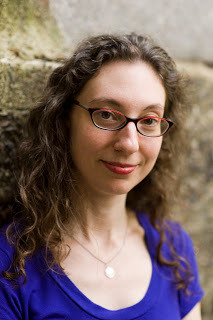 You and I share a love of historical fiction. Please tell readers about your novels and how you began writing historicals. I also know that you are fascinated by Elizabethan times. What draws you to that period, and have you considered writing about others?
You and I share a love of historical fiction. Please tell readers about your novels and how you began writing historicals. I also know that you are fascinated by Elizabethan times. What draws you to that period, and have you considered writing about others? It started with the characters, themselves. I didn't set out to write a historical novel (The Blood Confession ), but I had read about this legendary Countess Bathory, who believed that bathing in the blood of virgins would keep her young forever. I was fascinated (and, yes, repulsed) by this, but it made me want to read more about her, to answer the question: "what was she thinking?" History offered no satisfying answer - "she was crazy" was too obvious, too pat. This became the perfect fictional exercise: what would drive a person to do such a thing? The more I researched, the more I saw how the time period, and her status as a woman in that time, could have shaped this character.
The same is true for my second book, The King's Rose . I was drawn to Tudor England after reading about Catherine Howard, the fifth wife of King Henry VIII. Catherine was condemned for committing adultery against a king who had already beheaded a former wife (Catherine's own cousin, Anne Boleyn) for the same crime. Again: What was she thinking?!?!?!?!! And luckily, I fell completely in love with Tudor England. The history was like a treasure trove: the gowns they wore, the music, the banquets – and behind all of that, the violence of an era in which a word against your king could be punishable by death. It was a fascinating time to inhabit – safely, through fiction.
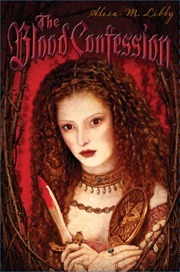 What are your research methods? And specifically how do you know when to stop researching and when to start writing?
What are your research methods? And specifically how do you know when to stop researching and when to start writing?I don't know when to stop. In fact, I continue to research even after I've started writing. I generally go through a number of revisions – trying to get the plot write, the structure, the voice. In between drafts I'm reading more about the character, the culture, the settings – all of this influences the next revision. It may not be the most efficient way of doing things, but I've found it's the way that works for me. I have to allow myself to start writing when I have that urge to get words on paper. Though the details evolve over time, I find that this time to play with the character's voice is critical.
What was your breakthrough into publishing?
My breakthrough came when I found a literary agent. It was pure luck—I sent him some sample pages, and I think he saw some promise in my work. He didn't give me a lot of feedback until I had delivered a full 200-page draft of my first novel. Then he gave me A LOT of feedback! But having an agent gave me the push to keep going, to meet deadlines and focus on one book.
Do have something new in the works?
I certainly hope so! But I'm never quite sure. I suffered writer's block after The King's Rose was finished. I found it difficult to let go of that book, that character, that world. I tried to find another historical character to write about, but nothing sparked. So I've been experimenting – but I hope that one of these experiments will turn into a book, someday.
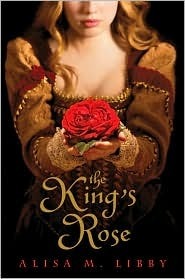 Do you have advice for aspiring writers?
Do you have advice for aspiring writers?Just write. Don't listen to what your friends or family says about what you write. Just write. Don't worry if you hate what you've written – that is a part of the creative process. Just keep writing, keep putting down ideas. Don't just talk about writing that story or epic poem or novel – start doing it. It's not easy, but it is worthwhile. You'll learn a lot about writing, and about yourself, along the way.
What's the best way for readers to learn more about you?
Please visit my blog: www.alisalibby.com/blog. I write about my current work in progress, my writing process, and what I'm reading. There are occasional posts about baking cookies and spending time with my one-eyed basset hound, Roxanne. I love to hear comments from readers and fellow writers!
Thanks, Alisa! My stubborn basset hound Boomer says "hi"!
Published on July 25, 2011 08:24
July 9, 2011
Debut Authors of the Class of 2k11: Carrie Harris
Just reading Carrie Harris's answers to my questions made me want to meet her. She's funny and smart, and her debut novel, Bad Taste in Boys, truly sounds like it's going to rock right out of the gate. Here's Carrie!
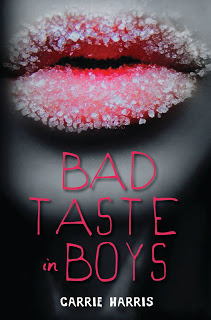 Congratulations on the publication of your novel, BAD TASTE IN BOYS. Can you tell us a bit about the story and what inspired it?
Congratulations on the publication of your novel, BAD TASTE IN BOYS. Can you tell us a bit about the story and what inspired it?
Thanks so much! BTIB is about a girl named Kate Grable. Kate's a super smart med geek, and she's the student trainer for her high school football team. She figures the experience will look good on her college apps, and as an added bonus she gets to be close to her quarterback crush, Aaron. Then something disturbing happens. Kate finds out that the coach has given the team steroids. Except...the vials she finds don't exactly contain steroids. Whatever's in them is turning hot gridiron hunks into mindless, flesh-eating...zombies.
Unless she finds an antidote, no one is safe. Not Aaron, not Kate's brother, not her best friend...not even Kate...
Dum dum DUM.
If you can't tell, I'm a huge monsterphile. Zombie movies in particular always crack me up, because movie characters never seem to have any problem believing that their neighbors are turning into zombies. Um, hello? Only crazy people think things like that. So I started off thinking I might want to do a book about a completely rational person who discovers a zombie virus. And then I started mashing it together with other ideas that I had floating around in my head, kind of like a math project gone completely whack-a-ding-hoy. So BAD TASTE IN BOYS is really Frankensteinian weird science plus the undead football players from Beetlejuice divided by high school geekery.
If math books were more like that, I might have become a mathematician.
Ha - me, too! How long have you been writing for children/teens? Have you written other books or is this your first effort?
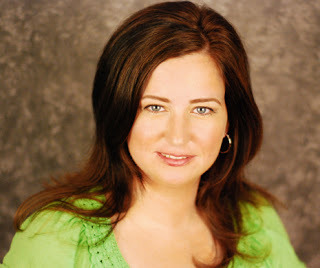 This is only my second YA. The first got me an agent, and the second got me a sale! But don't hate me. I spent a lot of time writing in other genres. I wrote a stage play, and a screenplay, and a bunch of poetry, and about 700 role playing books. Okay, maybe that last bit is an exaggeration, but it sure felt like it!
This is only my second YA. The first got me an agent, and the second got me a sale! But don't hate me. I spent a lot of time writing in other genres. I wrote a stage play, and a screenplay, and a bunch of poetry, and about 700 role playing books. Okay, maybe that last bit is an exaggeration, but it sure felt like it!
Can you describe your path to the publication of BAD TASTE IN BOYS?
Well, the road to publication was very long for me. Like *cough* fifteen years. *cough* When The Email finally came, I ran around the house screaming and then left a voice mail for my husband that said: "OhmygodcallmecallmeCALLMERIGHTNOW!" And then I put Thriller on and did the dance, because that's obviously the best way to celebrate selling a zombie book.
About an hour later, I realized I should probably email my agent back. I went to my computer and found another email from her asking if the shock had killed me and did she need to call an ambulance.
I'm laughing out loud here, Carrie! Back to business...Do you have any advice for beginning writers?
I could go on for days! But I think one of the biggest things is to think hard about what you want from writing. Do you want to be a professional writer, or do you write because you love it and that's enough? Because writing as a business is a lot different than writing for fun. It's still my dream job, but it's a JOB. We write when we're not in the mood; we write when we're sick. And a lot of our time is spent on things other than writing—responding to all kinds of emails, marketing, interviews, mailing things, keeping up on what's happening in the industry and so on. You have to put in a lot of hard work to get to the fun stuff. (Although the fun stuff is admittedly supermegafun!) If you're not interested in all that work stuff and just want to write stories? THAT'S OKAY. The key is to figure out what you want to accomplish.
And if your motivation is fame and fortune, I suggest trying out for the NBA instead.
Another LOL moment, but really, this is wise advice. Can you tell us something about your personal life – inspirations, plans for the future, goals, etc.?
I like surrounding myself with interesting people. That way when I start spouting off about zombies and werewolves and things, they don't look at me funny or try to have me committed. This is why I'm married to a ninja doctor. My son idolizes Billy Idol. My daughters are the only four year olds I know who are well versed in the best ways to kill a zombie. My friends are the kinds of people who think Bacon Parties are completely normal, and when my in laws go on trips, they don't bring me t-shirts. They bring me monster bracelets.
So whenever I'm feeling a little down or struggling for good ideas, there's always something fun and strange and marvelous going on around me. Which is quite plainly AWESOME.
Do you have any new writing ventures underway?
Yes! BAD TASTE IN BOYS will have a sequel which is currently titled BAD HAIR DAY. It's coming out from Delacorte in 2012-ish. (Specific, aren't I?) BAD HAIR DAY follows Kate Grable on a new adventure involving werewolves, nanotechnology, blueberry flavored astronauts, shaved bears in lab coats, and a bath mat made out of human hair. I'm super excited about it! And then I'll have another to-be-determined book coming out in 2013. I'm thinking I might want to explore something new, but I won't rule out the possibility of seeing Kate again. I like that her adventures each stand completely alone, so I can write as many or as few as people want to read!
Do you have a website where readers can learn more about BAD TASTE IN BOYS?
ABSOLUTELY! Please come visit me at http://carrieharrisbooks.com! I love to hear from readers!Thanks so much for hosting me, Janet! It's been a pleasure!
Trust me, the pleasure has been mine. :)
 Congratulations on the publication of your novel, BAD TASTE IN BOYS. Can you tell us a bit about the story and what inspired it?
Congratulations on the publication of your novel, BAD TASTE IN BOYS. Can you tell us a bit about the story and what inspired it?Thanks so much! BTIB is about a girl named Kate Grable. Kate's a super smart med geek, and she's the student trainer for her high school football team. She figures the experience will look good on her college apps, and as an added bonus she gets to be close to her quarterback crush, Aaron. Then something disturbing happens. Kate finds out that the coach has given the team steroids. Except...the vials she finds don't exactly contain steroids. Whatever's in them is turning hot gridiron hunks into mindless, flesh-eating...zombies.
Unless she finds an antidote, no one is safe. Not Aaron, not Kate's brother, not her best friend...not even Kate...
Dum dum DUM.
If you can't tell, I'm a huge monsterphile. Zombie movies in particular always crack me up, because movie characters never seem to have any problem believing that their neighbors are turning into zombies. Um, hello? Only crazy people think things like that. So I started off thinking I might want to do a book about a completely rational person who discovers a zombie virus. And then I started mashing it together with other ideas that I had floating around in my head, kind of like a math project gone completely whack-a-ding-hoy. So BAD TASTE IN BOYS is really Frankensteinian weird science plus the undead football players from Beetlejuice divided by high school geekery.
If math books were more like that, I might have become a mathematician.
Ha - me, too! How long have you been writing for children/teens? Have you written other books or is this your first effort?
 This is only my second YA. The first got me an agent, and the second got me a sale! But don't hate me. I spent a lot of time writing in other genres. I wrote a stage play, and a screenplay, and a bunch of poetry, and about 700 role playing books. Okay, maybe that last bit is an exaggeration, but it sure felt like it!
This is only my second YA. The first got me an agent, and the second got me a sale! But don't hate me. I spent a lot of time writing in other genres. I wrote a stage play, and a screenplay, and a bunch of poetry, and about 700 role playing books. Okay, maybe that last bit is an exaggeration, but it sure felt like it!Can you describe your path to the publication of BAD TASTE IN BOYS?
Well, the road to publication was very long for me. Like *cough* fifteen years. *cough* When The Email finally came, I ran around the house screaming and then left a voice mail for my husband that said: "OhmygodcallmecallmeCALLMERIGHTNOW!" And then I put Thriller on and did the dance, because that's obviously the best way to celebrate selling a zombie book.
About an hour later, I realized I should probably email my agent back. I went to my computer and found another email from her asking if the shock had killed me and did she need to call an ambulance.
I'm laughing out loud here, Carrie! Back to business...Do you have any advice for beginning writers?
I could go on for days! But I think one of the biggest things is to think hard about what you want from writing. Do you want to be a professional writer, or do you write because you love it and that's enough? Because writing as a business is a lot different than writing for fun. It's still my dream job, but it's a JOB. We write when we're not in the mood; we write when we're sick. And a lot of our time is spent on things other than writing—responding to all kinds of emails, marketing, interviews, mailing things, keeping up on what's happening in the industry and so on. You have to put in a lot of hard work to get to the fun stuff. (Although the fun stuff is admittedly supermegafun!) If you're not interested in all that work stuff and just want to write stories? THAT'S OKAY. The key is to figure out what you want to accomplish.
And if your motivation is fame and fortune, I suggest trying out for the NBA instead.
Another LOL moment, but really, this is wise advice. Can you tell us something about your personal life – inspirations, plans for the future, goals, etc.?
I like surrounding myself with interesting people. That way when I start spouting off about zombies and werewolves and things, they don't look at me funny or try to have me committed. This is why I'm married to a ninja doctor. My son idolizes Billy Idol. My daughters are the only four year olds I know who are well versed in the best ways to kill a zombie. My friends are the kinds of people who think Bacon Parties are completely normal, and when my in laws go on trips, they don't bring me t-shirts. They bring me monster bracelets.
So whenever I'm feeling a little down or struggling for good ideas, there's always something fun and strange and marvelous going on around me. Which is quite plainly AWESOME.
Do you have any new writing ventures underway?
Yes! BAD TASTE IN BOYS will have a sequel which is currently titled BAD HAIR DAY. It's coming out from Delacorte in 2012-ish. (Specific, aren't I?) BAD HAIR DAY follows Kate Grable on a new adventure involving werewolves, nanotechnology, blueberry flavored astronauts, shaved bears in lab coats, and a bath mat made out of human hair. I'm super excited about it! And then I'll have another to-be-determined book coming out in 2013. I'm thinking I might want to explore something new, but I won't rule out the possibility of seeing Kate again. I like that her adventures each stand completely alone, so I can write as many or as few as people want to read!
Do you have a website where readers can learn more about BAD TASTE IN BOYS?
ABSOLUTELY! Please come visit me at http://carrieharrisbooks.com! I love to hear from readers!Thanks so much for hosting me, Janet! It's been a pleasure!
Trust me, the pleasure has been mine. :)
Published on July 09, 2011 13:45



